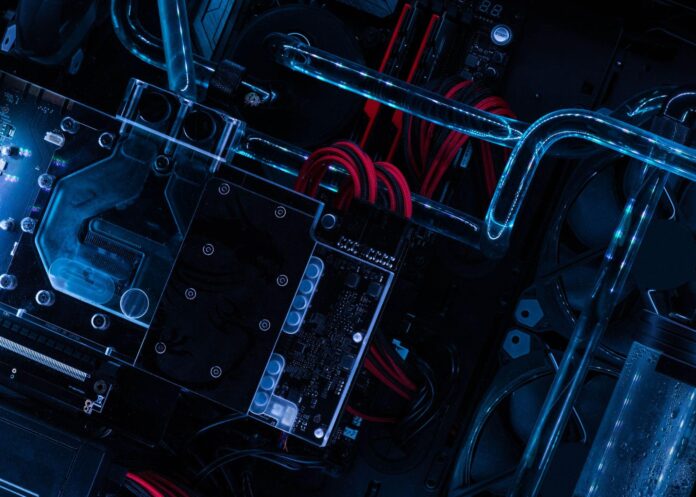Technology is always evolving, so in the coming five years, we may anticipate a wide range of new projects that will alter the way we live. The most intriguing top technological trends that we envision developing over the next several years are listed here after a thorough search of all the leading technology magazines.
Growth of the metaverse
We have been reading a lot about the Metaverse’s software development and the potential future of Facebook’s new venture. Although it isn’t now possible to live in the Metaverse, we believe it will be feasible in five years.
Augmented and virtual reality
The metaverse has two sides: virtual reality and augmented reality. With new specialized glasses, augmented reality might expand the amount of real-world advertising area. By itself, virtual reality would open up a completely new digital market for advertising. Before the technology can be categorized as one of the quickly growing technologies, it still has some catching up to accomplish.
Gaming trends are a major influence on the Metaverse experience. More games that thoroughly immerse you in the experience will be offered there as the Metaverse’s technical capabilities advance. And it’s that kind of transformative experience that will lure people into the Metaverse.
Edge computing
The latency that might impact trends in how operations are managed is one of the main worries for many businesses nowadays. Edge computing is useful in this situation.
Edge computing decreases reaction times and bandwidth use by bringing computer operations and data storage technologies closer to companies. Some benefits of cutting-edge technology that we’ll witness in next trends are:
- Reduces issues with privacy laws, local compliance, and data sovereignty, raising cybersecurity to a new level.
- Edge computing will significantly boost computer performance since it will eliminate latency.
- Reduces the expense of retaining the data by classifying it from the perspective of management.
Blockchain
Many people only consider blockchain technology in the context of digital currencies like Ethereum and Bitcoin. primarily because cryptocurrencies, specifically Bitcoin (BTC), and its incredible investment potential propelled blockchain technology into the public eye. Through bitcoin wallet, sending and receiving bitcoins has never been easier. However, blockchain technology provides a variety of security measures that are useful in other contexts.
Data on a blockchain can only be added to; it cannot be removed or modified. Digital data is particularly safe since it cannot be altered. Additionally, because the blockchain software is consensus-driven, no single person or entity has ownership over the data. Blockchain indicates that no outside gatekeeper is in charge of overseeing individual transactions or the entire software system.
Artificial intelligence- AI
In the coming years, artificial intelligence (AI) will advance significantly. Researchers and data scientists have recently discovered more inventive methods to employ the emerging technology, which has improved the concept of AI.
We anticipate that the use of artificial intelligence (AI) for consumers will grow quickly. It will make your house smarter, your energy bill less, and the world greener through AI and intelligent hardware design. In the coming ten years, there will be an increasing concern that AI will replace human workers. This decade will see more collaboration and robot-human contact. A decade full with hope and anxiety for the human generation.
Machine learning
The improvement in chip architecture and data access is a significant factor in the development of machine learning technologies. The ability to compute has greatly increased. The new corporate currency is data. According to trends, access to and use of data will be important for many businesses in the future.
Machine learning algorithms use the data that smart sensors provide to learn much as a person would. Artificial intelligence and machine learning are two technological advancements that are here to stay.
Cloud computing
As more businesses, both big and small, cease using local servers and start storing their data in the cloud, cloud computing trends will only grow in the upcoming years. In the following five years, numerous organizations, enterprises, and sectors may be expected to make a significant shift to cloud computing.
Additionally, there will be additional advancements in cloud computing alternatives like edge computing and fog computing. Fog computing avoids the problems caused by cloud computing technology’s inability to quickly handle large volumes of data. Fog computing sends all operations to the edge of the network, resulting in substantially quicker speeds.
Robotic process automation (RPA)
RPA is a top emerging technological trend that will automate numerous occupations, much like machine learning and AI. RPA uses software to automate a variety of everyday corporate tasks, including processing technology, translating applications, altering data, and even responding to texts and emails. In essence, RPA technology will automate routine processes that were previously completed by hand.
Quantum computing
Quantum entanglement and superposition are two examples of quantum concepts that are used in quantum computing. This fascinating scientific development in technology contributes to the creation of new vaccinations and the prevention of the spread of viruses. Due to how simple it is to monitor, query, and act on data from any source, quantum computing makes these things feasible.
Future developments in banking and finance should also make use of quantum computing technologies to lower credit risk and spot fraud. Another linked tendency for the software is how it affects science. Consider how more research may lead to increased business and growth.
This list of the top technological trends for the upcoming years demonstrates how quickly technology develops. Even though all of these technologies are currently in very early stages of development, we can anticipate that in the coming five years they will all continue to advance and change.















